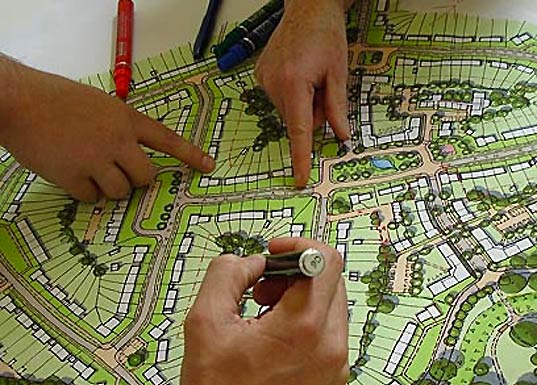As we welcome another year with future visions for everything—from our personal to community, urban and national spheres of existence—we look to universally accepted principles for creating better living spaces. Accessing these principles may involve formal information platforms such as published references or may simply require listening to people around us.
Advocacies shaping planning, urban design
People promote interests, preferences, hopes, dreams, and alternatives to the status quo.
Some individuals are capacitated enough to get heard and eventually get what they want. Some need to join forces to collectively attract attention, gain support and realize their visions. Others do not have the means to steer actions towards preferred futures and rely on organizations and institutions to have a voice in decision-making processes.
Public offices, community organizations, local and international non-government organizations as advocates represent the vulnerable and powerless members of society. There exist advocacy groups that advance programs, strategies, and projects.
Ease of expression and access to information are facilitated by social media platforms. Individuals nowadays can easily express what they want and do not want. What takes off from the drawing table is significantly determined by the support that can readily be gauged through feedback from netizens. Public flak that puts high-impact projects on hold is becoming more significant as a decision factor due to the wider reach of groups initiating critical thinking towards change.
Interventions in our built environment are presently influenced by advocacies related to nature, capital, people, and technology. The translation of these issues to the physical spaces we use is mediated by multi-level contexts.
Climate change-related advocacies affect design standards, location decisions and budget allocations, development pacing and trajectories. | BEHANCE.NE)
International context of shared advocacies
Our shared world ecosystem breeds common hopes for our cities and settlements. International-level discussion themes that affect policymaking and planning include climate change, globalization, armed conflicts, and technology.
Climate change-related advocacies affect design standards, location decisions and budget allocations, development pacing and trajectories. The common goal of protecting the planet figures in policies on industrialization, urbanization, population, and development intensities.
People increasingly demand accountability by asking questions such as: How are construction materials produced? Did material processing involve child labor? Was the natural environment threatened in the process? Were communities affected as the products were delivered to the distribution centers?
Hence, there’s an increasing preference for sustainable materials, transparent technologies, and green buildings.
With globalization as the prevalent economic set-up, more foreign direct investments will translate to more business locators that will add to the demand for housing. The local versus imported products and services discourses will influence the coming in of foreign designers, foreign labor, and international material brands. Economic convergence is paralleled by people divergence due to territorial issues. These divergence tendencies result in armed conflicts that impact price structures, affordability, and financial safeguards. Advocacy on cultural diversity, peace building, and critical regionalism (Botz-Bornstein, 2015) can mitigate the impacts of human-induced risks due to conflicts.
With the free flow of technology across national borders, artificial intelligence (AI) will continue to permeate design conceptualization, project implementation and monitoring. While AI application provides infinite possibilities for life quality enhancement, it also threatens the human facets of our individual and collective lives.
Technology development allows us to deal better with disaster risks, enable new social transactions, and create trans-disciplinary informed spaces. Digital marketing, computer-aided design, and cross-border collaborations are among the outcomes of AI technology. The reliance on AI will be tempered by advocacies on space production anchored on human creativity and social relationships.
Universal Design (Mace, 1997) as a strategy for promoting accessible spaces continues to gain traction with the growing realization that the difference between the abled and disabled is a factor of many attributes that relate to sensory and physical faculties. | BEHANCE.NE
Place and sector-based advocacies
Universal Design (Mace, 1997) as a strategy for promoting accessible spaces continues to gain traction with the growing realization that the difference between the abled and disabled is a factor of many attributes that relate to sensory and physical faculties. Accessibility is also a factor of age, gender, life cycles, culture, and social constructions.
Gender sensitivity, as a planning and design principle, has figured in development programs that are financially supported by international funding agencies. Spatial bias—which limits the access to and enjoyment of public facilities, common areas and private developments—is addressed by designs that accommodate people with different gender roles. Space outcomes include child minding areas, genderless toilets, breastfeeding rooms as examples.
Cultural sensitivity in space planning manifests in spaces that accommodate different religious practices, customs and traditions, value and belief systems, and other social attributes. Translations include prayer rooms in airports, color and motif choices for government offices, land use plan allocations for assembly places and others.
Inclusive spaces these days go beyond accommodating a diverse group of people. Animals as live entities that are recognized as part of the urban ecology are also provided spaces that allow them to co-exist with human beings.
Universal Design (Mace, 1997) as a strategy for promoting accessible spaces continues to gain traction with the growing realization that the difference between the abled and disabled is a factor of many attributes that relate to sensory and physical faculties. | BEHANCE.NE
Expert and community knowledge
Catering to needs and preferences advocated by various sectors and interest groups often subjects decision makers to choices between technical knowledge provided by the experts, and community knowledge provided by the locals and end-users.
Drawing the line between these two knowledge sets will have to be guided by risk factors, priority setting and long-term impacts.
References:
Botz-Bornstein, Thorsten. (2015). Transcultural Architecture: Limits and Opportunities of Critical Regionalism. Ashgate;
Mace, Ronald. (1997) The 7 Principles of Universal Design. North Carolina State University.
The author is a Professor at the University of the Philippines College of Architecture, an architect and urban planner
